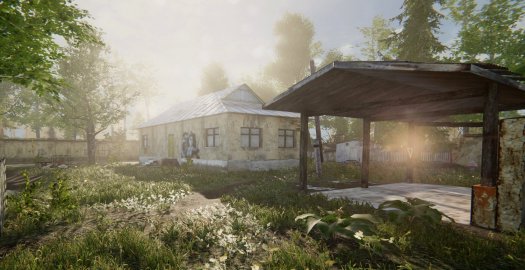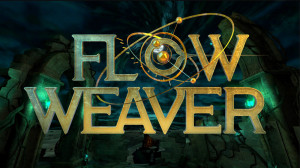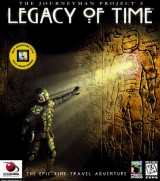Review for Where Wind Becomes Quiet

Most story-driven exploration games like Dear Esther and Everybody’s Gone to the Rapture deal with difficult subject matter, and Mike T’s Where Wind Becomes Quiet is no exception, touching on themes of addiction, depression, suicide, the tragic loss of a loved one, and the trials of dealing with memory loss. The premise is an intriguing one as you progress through vaguely familiar locations that agonizingly suggest you’ve been here before. A young woman narrates tales of her father, and as you discover revealing documents and experience flashbacks through object associations, ultimately you’ll begin to piece together the dark secrets of an unnamed famous author and his chilling past. It’s all so cryptically teased that it takes a lot of work to figure out the overarching plot, but stick with it and the well-designed environments are a joy to explore on the way to an emotionally powerful ending.
As the first-person protagonist, you start out coughing and hacking as you try to regain your balance in a wooded area with a crude path showing the way forward. An unseen young woman’s voice asks if you are going somewhere, and you respond that you are visiting “that place” again, though you’re unable to describe it when pressed for details. In fact, you don’t recognize your immediate surroundings, so you have no choice but to begin exploring. You’ll move freely with the standard WASD/mouse combination, and along the way you will notice a number of signposts that are actually a clever way of providing a brief tutorial displaying appropriate symbols. There is no formal inventory system, but you can pick items up one at a time and use them to solve certain puzzles. On a single occasion two items are combined, but this occurs automatically once you find the second one.
Soon you observe some strange swirling lights, and stepping into their midst triggers an event that requires you to highlight familiar objects around you to recall a lost memory about this place. There are no clues as to which objects you’re looking for, but if you get one wrong you simply can re-enter the light show and try again as many times as needed, with any correctly highlighted items preserved. Once you get this right, the scene shudders and you find yourself at a gateway to an abandoned structure, which you now recognize: a boarded-up school, with decaying playground equipment scattered around the yard.
When you approach the building, the narrator introduces herself as a 16-year-old girl named Alex. She wants to tell you her father’s life story, and as your journey progresses, you will learn all about him from her periodic anecdotes, as well as gain many insights into Alex herself, who clearly has lots of imagination. These ongoing narrations throughout – both from Alex and other characters you encounter later on, as well as monologues from the protagonist himself – are triggered by location, so you should take the time to explore every inch of the places you visit so you don’t miss anything.
At first there doesn’t seem much to do at the school. All the doors are locked, so you are stuck in the yard and can’t pick anything up. What is here, though, is another pattern of swirling lights. Only when you interact with them and again choose the correct associated objects will you unlock the puzzles to be solved so you can unlock the school. This same formula repeats throughout the game in a very linear pattern, requiring that you fully explore and solve all the puzzles and tasks in one area to unlock the next, often after completing another object-association task first. You cannot return to previously visited areas, but there is never a need to do so.
From the school playground you’ll move on to a woodland waterfront area with an ancient Rome vibe, with stone archways that look like an aqueduct and a carved rock fence with scattered ruins. Later a mining camp descends into the vast mine itself before re-emerging at another abandoned encampment, followed by more deserted buildings and a long bicycle path that ultimately leads to your family home, also in ruins. These locales vary in size, but all except the mine look larger than they actually are since you are blocked by both natural (trees, bushes) and man-made (fences, barbed wire) barriers when you try to venture too far off the established path.
The story is gradually revealed as you play, and it is a strong one, though it’s anything but straightforward. In addition to the extensive narration by Alex, you will encounter a hovering drone-like droid as well as several suspicious characters, including a silhouetted figure who challenges you to a fight. You will also discover a number of revealing documents such as newspaper clippings and journal entries that hint at unexplained supernatural phenomena, mysterious lights causing hallucinations, and the collapse and shutdown of various mines in the area except for one. Clearly there is something mysterious about this mine, but what? It also takes a fair bit of reading and even more reading between the lines to fully grasp the protagonist’s role in all this. You’re meant to remain somewhat in the dark until the very end, but the more you learn along the way, the more horrific the revelations become. Though it’s not required to complete the game, it’s well worth taking the time to thoroughly review all the documents you find, and it’s a shame you aren’t able to take them with you for later reference.
The voice acting is a bit of a mixed bag. To my ear all of the male characters sounded like they were performed by the same actor with only slight variations, although this may be intentional for valid narrative reasons. The quality, however, is acceptable at best, with a mostly monotone delivery and only the occasional hint of genuine emotion. Fortunately Alex is very well done, with the right amount of matter-of-factness regarding her lot in life and a whimsical nostalgia for her father’s ups and downs. If you choose to enable subtitles, you will sometimes see discrepancies between the spoken word and written text. This can be a bit jarring, but does not happen often so is a minor quibble. You can’t skip the dialog, but you can continue on your way without needing to wait for the conversation to finish.
Graphically the game excels with crisp, photorealistic 3D environments. Attention to detail has obviously been paid: the grass and trees swaying in the breeze are convincing, all surfaces have high-quality textures, and the sunlight and other light sources nicely reflect off the surrounding landscape, causing believable shadows. Sound design is of equal caliber, with lots of ambient effects of wildlife chirping and the wind rustling in the background. As you walk or ride a bike, the noise you make accurately reflects the current terrain, and echoes realistically reverberate around the mine. Music is minimal and somber (as you might expect given the subject matter), but the score is very well done using just a few piano notes and guitar chords to convey an appropriately serious mood.
Initially you are given a fair bit of help from the protagonist essentially telling you what to do, but gradually these comments dry up and you are left pretty much on your own, with just the occasional hint here and there. A visible “X” is also used to identify useable objects in the early going, but these too become sporadic later on, inconsistently appearing on some hotspots but not all. Most challenges require finding the correct item in your current location and using it in the right way, so once “X” no longer marks all the spots, you’ll have to pass the cursor over everything of interest to see what is interactive. While this is a standard adventuring mechanic, it is particularly frustrating in one difficult timed sequence late in the game.
Overall the puzzles are organically integrated into the environments and most are fairly logical. For example, you need to find a gas can to use on a generator and figure out the correct size of wrench to open a bolted panel. There are a few frustrating exceptions, however, such as figuring out how to reach a cat in a tree or how to use a cow to get past a locked gate, which can take a lot of trial and error just to come up with unintuitive solutions. One puzzle in particular stands out as quite clever. In the mine you need to figure out a way to open a door through its connection to a series of boxes floating in space in a room not far away, each with a number and arrow showing a direction. This makes for a more complex challenge and a welcome change of pace from the typical inventory fare.
I have few complaints about the traditional adventure-style gameplay, but it’s important to note that your progress is recorded by a fairly sparse auto-save system. Retracing your steps can be a lengthy process, so when stopping it’s best to quit soon after a checkpoint to avoid significant backtracking when you resume. More problematic are two unwelcome action-oriented sequences. First, there is an arcade-like scene in the mining camp where you can get killed by a potato gun (that’s right, a potato gun!) if you are unable to avoid being shot before finding a way to disarm it. Then there is a difficult boss-type fight near the end. Not only must you evade the enemy’s attacks, the items you need and the means of using them to defeat him under pressure are not at all obvious – and there were no clues I found for guidance, resulting in a whole lot of dying and mounting frustration. Finding yourself suddenly running around trying to survive has no place in an otherwise leisurely adventure, and the second one in particular really detracted from my enjoyment at what should have been a crucial part of the story.
Notwithstanding the few notable issues I had during my time with Where Wind Becomes Quiet, I very much enjoyed most of my three or so hours exploring these beautiful locations tainted by tragedy. The story had me hooked, anxious to see how all the narrative pieces fit together, and it all culminates in a dramatically poignant ending that took me completely by surprise. Brace yourself for a couple of pulse-pounding sequences that seem entirely out of place in between the more traditional adventure-style puzzling, but if you are a fan of well-designed games that tackle difficult subject matter in thoughtful ways, then this one is for you.




























